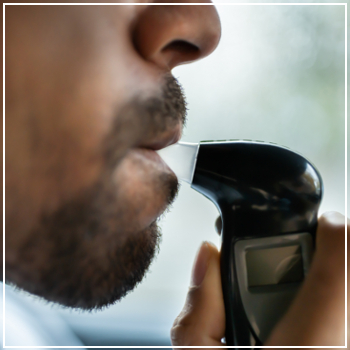Before the car can start, the driver must blow into a mouthpiece to check their blood alcohol concentration (BAC). If the BAC is below the legal limit, the vehicle will start. If it's too high, the device stops the car from starting until the driver provides a clean sample. This helps ensure that only sober drivers get behind the wheel. Some IIDs also require a “rolling retest†after the car has started. This test checks if someone else provided the initial sample. The device doesn’t shut the car off immediately but records the event and warns the driver to stop. This information is then sent to the DMV for review. As of 2020, every state in the U.S. has laws requiring ignition interlock devices for DUI offenders. New Mexico was the first to implement this in 2005, mandating IIDs for all convicted drunk drivers. Between 2006 and 2017, the state saw a significant drop in drunk driving incidents—over 70,000 cases were prevented by these devices. Other states followed suit, though requirements vary. Some only require IIDs for repeat offenders, while others, like Connecticut, apply them to all DUI cases, even first-time offenders. All-offender states have seen greater reductions in drunk driving accidents and fatalities. Currently, 34 states and the District of Columbia have all-offender laws. In Connecticut, IIDs are required not just for DUIs, but also for other offenses such as refusing a chemical test, driving under the influence of drugs, or causing vehicular assault or manslaughter. The CDC reports that IIDs can reduce DUI offenses by up to 70%. However, one of the biggest challenges is ensuring that offenders actually install and maintain the devices. MADD also found that IIDs cut repeat DUIs by 67% and reduced drunk driving deaths by 15%, making them one of the most reliable tools for keeping impaired drivers off the road. Some states offer hardship licenses to people with DUI convictions, allowing limited driving for essential trips like work or school. But to qualify, drivers usually need to install an IID first. This ensures that only those who are committed to sobriety can drive. Massachusetts passed Melanie’s Law in 2005, which increased penalties for drunk driving and made IIDs mandatory for repeat offenders. Other states, like Connecticut, use IIDs as part of license reinstatement. Once a driver completes their suspension and meets all requirements, they can get their license back—but only if an IID is installed and maintained for a set period. Ignition interlock devices do more than just measure BAC—they track key data about the driver. For example, the number of attempts to start the car can show how serious the driver is about staying sober. Rolling tests and GPS tracking can also help identify if someone else is trying to bypass the system. Many IIDs also include a camera to confirm that the correct person is blowing into the device. However, this data isn't always available in real time. Drivers must bring their cars in for maintenance every 30 to 90 days. At these appointments, the device is calibrated, and all stored data is sent to the DMV. If a driver fails to keep up with maintenance, their IID privileges may be revoked, and their license suspension could be reinstated. It’s important to stay compliant to avoid further legal trouble. Need an ignition interlock device installed? After finishing your DMV paperwork, contact DaSilva’s Auto Body to schedule an appointment today. Let us help you stay on the right path. DANIELI 1000 Series Rolling Guide DANIELI 1000 series rolling guide is a kind of equipment used in steel production line, mainly used to guide and control the rolling of steel billet in the production process. It consists of a set of rolling guide rails and guide rollers, which can ensure the smooth rolling of the billet on the production line and reduce the friction and loss between the billet and the equipment. Danieli 1000 Series Rolling Guide,Rolled Steel Guide Heat-Resistant Equipment,Carbon Steel Rolling Guide,Various Series Of Rolled Steel Rolling Guides JINGJIANG EASTSUN METALLURGICAL MECHANICS CO.,LTD , https://www.jesguide.com Over the past 15 years, many states have started using ignition interlock devices (IIDs) to help prevent drunk driving. These devices act like a breathalyzer and are linked directly to a car’s ignition system.
Over the past 15 years, many states have started using ignition interlock devices (IIDs) to help prevent drunk driving. These devices act like a breathalyzer and are linked directly to a car’s ignition system.All States Now Require IID Laws
IIDs Proven Effective
Required for Hardship Licenses
Stricter Penalties in Some States
More Than Just a Device
DANIELI 1000 series rolling guides have the following features and advantages:
1. High-quality material: It is made of high-quality alloy steel material, which has good wear resistance and corrosion resistance, and can run stably for a long time.
2. Precise design: The rolling guide rail and guide roller are precisely designed and processed to ensure the accuracy of their size and shape, as well as the matching degree with the steel billet, so as to achieve a stable rolling effect.
3. Automatic adjustment: The rolling guide can automatically adjust the position and angle of the guide roller according to the size and shape of the billet to ensure the stability and balance of the billet during rolling.
4. Energy saving and environmental protection: Adopt advanced lubrication system and energy-saving design to reduce the amount of lubricant used and energy consumption, and reduce the impact on the environment.
5. Easy maintenance: the rolling guide has a simple structure, easy to maintain and clean, reducing downtime and maintenance costs.
Overall, DANIELI 1000 series rolling guide is a reliable, efficient and durable equipment that can improve the production efficiency and product quality of the steel production line.
Why Do States Require Ignition Interlock Devices?